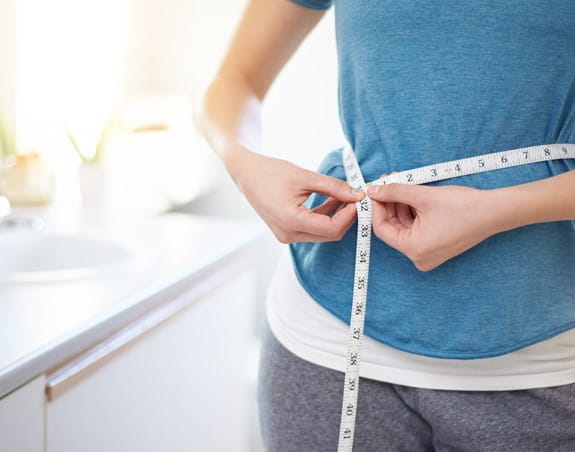Reduce your risk of cancer with a healthy body weight

Did you know?
Obesity or not having a healthy body weight increases your risk of at least 13 different cancers. You can reduce your risk of cancer by getting to and staying at a healthy body weight.

How do I know if I have a healthy body weight?
A healthy body weight is different for everyone. If you're not sure what's healthy for you, check with your doctor.
What is BMI?
The body mass index (BMI) is a tool that can help healthcare professionals decide when adults may be at risk for developing health problems because they are underweight or overweight. The BMI uses a chart based on height and weight.
Enter your height and weight below to find your BMI. Be sure to use a scale and measuring tape for these measurements – don't estimate.
This BMI tool is for adults over 18. Pregnant or breastfeeding women should not use this tool.
What your BMI means
The BMI isn't perfect
While there are some drawbacks to using the BMI as a tool to measure healthy body weight, it is still a helpful tool when talking about weight and goals with your doctor. Some things to remember:
- The BMI calculation uses weight and height to estimate – not exactly measure – body fat.
- BMI and body fat are different for men and women.
- BMI may not reflect the changes to body fat and muscle mass that happen as people age.
- Lean people with high muscle mass, such as athletes, may have high BMI scores.
Should I worry about the excess weight around my waist?
Does the excess weight around my waist put me at greater risk for cancer?
The short answer – yes. Waist circumference is another way to measure health risks related to excess abdominal fat.
A higher waist circumference increases your risk of colorectal cancer and may increase the risk of pancreatic cancer, breast cancer after menopause and uterine cancer.
Generally, people who carry too much weight around the waist (an apple body shape) have a greater risk of developing health problems than people who have more weight in the hip and thigh areas (a pear body shape).

How do you measure your waist?
Waist circumference is measured around the waist above the hip bone while you’re standing up. The measuring tape should be tight, but not too tight. Take the measurement after you breathe out.

What's an unhealthy waist?
The risk of developing health problems, including cancer, increases as waist circumference goes above 102 cm (40") in men and 88 cm (35") in women.
Can I have a normal BMI and a high waist circumference?
Yes. Even if you’re in the normal range on the BMI, a high waist circumference does mean you have some health risk. It’s best to talk to your doctor if you’re concerned.
